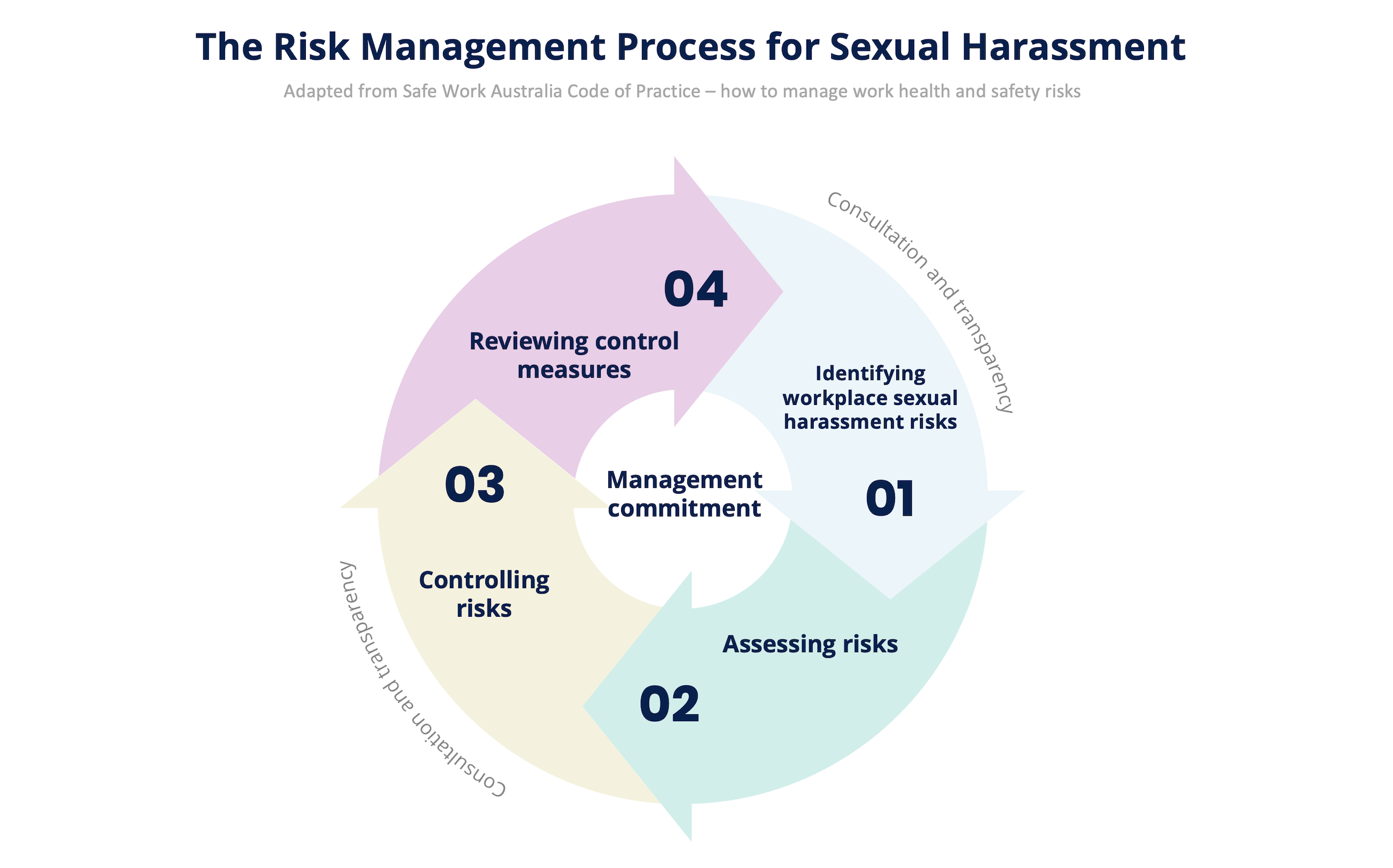Risk management processes for sexual harassment
The risk management process for sexual harassment looks specifically at identifying, assessing, controlling and reviewing sexual harassment risks.

The risk management process for sexual harassment model below has been adapted from the Safe Work Australia model code of practice. It’s been applied specifically to address sexual harassment although the principles and approach are the same.
There are three principles that underpin the model which we will consider here first. These are:
- management commitment
- consultation
- transparency
The four steps in the model – identifying risks, assessing risks, controlling risks and reviewing risks are considered in the proceeding sections.

Management commitment
Without a strong leadership commitment toward managing the risks of sexual harassment there is little chance of organisations taking a proactive approach to preventing sexual harassment before it occurs. Management can set the tone for the organisation and drive positive actions that impacts everyone, in large or small businesses.
An effective way of demonstrating commitment is the development of a leadership statement of commitment that is publicly available and promoted to all workers in an organisation. This is a good starting point for organisations as they embark on their journey through the risk management process.
The example statement below was developed by Champions of Change in their publication Disrupting the System: Preventing and Responding to Sexual Harassment in the Workplace. You can use it as a template to develop your own leadership statement. It is important that this is adapted to your context so that it has authenticity and impact. There are key message elements that provide guidance on the type of content you might need.
You can download an editable version of this template on this page.
The risk management process for sexual harassment
Find out what could cause sexual harassment and where it could occur.
How much harm could be caused by the risk to the individual and the organisation? Understand the nature of the harm that the risk has and the likelihood of it happening.
What can be done to eliminate or minimise the risk? Implement the most effective and reliable control measures that are reasonably practicable.
Review the risks and control measures to ensure they are working as planned.

